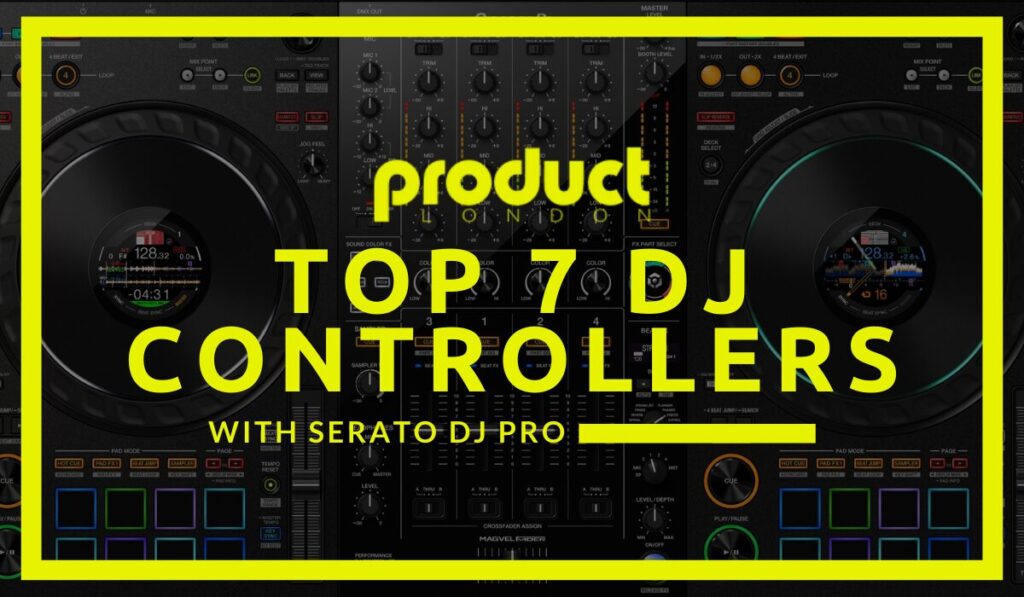Creating DJ-friendly tracks involves maintaining a consistent tempo, typically between 120 to 130 BPM for house music, and using the Camelot Wheel for harmonic mixing. Clear song structures with defined sections like verses, choruses, and extended intros and outros facilitate seamless mixing. Repetition techniques and well-timed breakdowns enhance engagement, while balanced frequency management through EQ and high-pass filters guarantees clarity. Incorporating live DJ effects and sidechain compression helps in creating dynamic space within the mix. By focusing on these elements, your tracks will be optimized for smooth, professional DJ shifts, keeping you ahead in the mixing game. Discover more to perfect your mixes.
Key Takeaways
- Maintain a consistent tempo and key using a metronome to ensure mixability.
- Incorporate clear song structures with repetitive hooks and extended intros/outros for predictable transitions.
- Design intros and outros with 8 to 32 bars, steady beats, and rhythmic elements for seamless mixing.
- Utilize frequency management techniques like EQ and high-pass filters to avoid clashes and maintain clarity.
- Implement dynamic energy management and defined breakdowns to enhance track flow and DJ engagement.
Consistent Tempo and Key
Maintaining a consistent tempo and key is crucial for creating DJ-friendly tracks, particularly within house music where the tempo typically ranges between 120 to 130 BPM. This range is perfect for tempo synchronization, ensuring seamless shifts between tracks and keeping the dance floor energized.
Producers should employ a metronome during production to enforce steady tempo, thereby preventing fluctuations that could disrupt the mixing process.
Key compatibility is equally essential for harmonic mixing. Utilizing the Camelot Wheel, DJs can easily identify which keys are compatible, ensuring harmonic coherence when blending tracks. This practice not only enhances the auditory experience but also facilitates smoother shifts, maintaining the set’s energy and flow.
For peak mixability, producers should focus on creating tracks with similar key signatures and tempos. This approach simplifies beat matching and harmonic mixing during live performances, allowing DJs to maintain a consistent auditory texture.
The integration of these elements—consistent tempo and key compatibility—serves as the foundation for creating tracks that are not only sonically pleasing but also technically efficient for live mixing scenarios. By adhering to these principles, producers can greatly enhance the appeal and functionality of their tracks within a DJ set.
Intro and Outro Sections
Crafting effective intro sections involves incorporating extended 16 to 32-bar segments with clear rhythmic elements, enabling DJs to beatmatch seamlessly with the outgoing track.
Utilizing techniques like beat matching and tempo control in these segments guarantees precision in changes.
Designing seamless outros can be achieved through gradual fading or looping sections, often enhanced with effects like reverb or echo, to guarantee smooth changes and maintain audience engagement.
These structural elements are critical for facilitating tempo identification and guaranteeing a cohesive, uninterrupted flow within the DJ set.
Crafting Effective Intros
Establishing an effective intro is essential for ensuring seamless shifts and maintaining the dance floor’s momentum. The intro length typically spans between 8 to 32 bars, allowing DJs to mix tracks without disrupting the set’s flow. This duration provides ample time for DJs to beatmatch and align tracks, ensuring a smooth exchange. Incorporating a steady beat or percussion elements in the intro creates a recognizable starting point, facilitating seamless blending with other tracks.
A gradual build-up in the intro, such as the introduction of melodic hooks or vocal snippets, captivates the audience and heightens anticipation for the main drop. These elements should be carefully layered to maintain energy and coherence, progressively drawing listeners into the track.
Here’s a visual representation of key elements in crafting effective intros:
| Element | Description |
|---|---|
| Intro Length | 8 to 32 bars, ensuring adequate time for smooth exchanges |
| Steady Beat | Provides a consistent starting point for mixing |
| Percussion | Enhances rhythmic alignment with other tracks |
| Melodic Hooks | Gradual build-up to captivate and engage the audience |
| Vocal Snippets | Introduces themes, adding anticipation for the main drop |
Designing Seamless Outros
Creating seamless outros is fundamental to maintaining the fluidity and energy of a DJ set. To achieve this, designing outros with consistent beats and phrasing is essential. Structuring these sections in 4 or 8-bar segments guarantees that DJs can easily mix and shift between tracks. This regularity aids in maintaining a cohesive and professional set.
Incorporate dynamic fades, including gradual volume decreases, filter sweeps, or echo effects, to facilitate smooth blending of the outgoing track with the incoming one. Such techniques guarantee continuity and prevent abrupt changes that can disrupt the dance floor’s momentum. Additionally, maintaining the energy level of the outro consistent with the main track helps in preserving the overall vibe.
Utilizing loopable hooks in the outro can provide DJs with recognizable cues for shifts, enhancing mix versatility. A signature sound or hook that can be looped or sampled offers a familiar element for seamless shifts. Distinguishing the outro from the main track body, while guaranteeing it remains cohesive with the musical theme, is vital for better mixing versatility.
- Structure outros in 4 or 8-bar segments
- Use dynamic fades like volume decreases and filter sweeps
- Maintain consistent energy levels in the outro
- Incorporate loopable hooks for recognizable cues
Repetition and Build-Ups
Repetition and build-ups are fundamental elements in DJ-friendly tracks, providing the structural backbone that facilitates seamless shifts and maintains dancefloor energy. Employing repetition techniques, producers typically structure sections to repeat every 16 or 32 bars, enabling DJs to shift smoothly between segments without disrupting the track’s flow. This predictable framework is essential for maintaining the rhythmic integrity necessary for live mixing.
Additionally, dynamic energy management can be effectively utilized to guarantee that the track maintains a cohesive flow throughout.
Build-up strategies play a pivotal role in heightening anticipation and driving crowd engagement. Effective build-ups often span 8 to 16 bars, gradually increasing tension and energy levels. Techniques such as incorporating vocal snippets or instrumental hooks can create memorable moments, which are invaluable for DJs aiming to cue and blend tracks seamlessly.
Subtle variations within these repeated sections, such as introducing additional percussion elements or altering dynamics, serve to keep the listener engaged while providing DJs with creative mixing opportunities.
Moreover, the strategic use of silence or brief pauses before a drop can greatly amplify the impact of the shift, making the subsequent section more compelling for the audience. By mastering these elements, producers can craft tracks that not only captivate listeners but also offer DJs the perfect canvas for seamless mixing.
Effective Breakdowns
Following the principles of repetition and build-ups, an equally important aspect of DJ-friendly tracks lies in the execution of effective breakdowns. These key moments typically occur around the 2-3 minute mark, offering a natural pause that primes the audience for the imminent build-up or drop.
Employing advanced breakdown techniques, such as incorporating filters, echoes, or reverb, can greatly enhance the emotional resonance of a track, creating a sense of space and anticipation. Structuring breakdowns to last between 8 to 16 bars is essential for maintaining the energy flow, allowing DJs ample time to seamlessly mix in the next track.
To sustain listener engagement, integrating vocal or melodic hooks during breakdowns is advisable. This practice not only retains audience interest but also facilitates smoother changes. Additionally, utilizing dynamic contrasts—transitioning from full, energetic sections into stripped-down breakdowns—can produce impactful moments that captivate both the DJ and the audience.
For more advanced techniques, consider exploring harmonic mixing and key compatibility to guarantee seamless changes between tracks.
Key considerations for effective breakdowns include:
- Timing: Typically around the 2-3 minute mark.
- Duration: Lasting between 8 to 16 bars.
- Effects: Use of filters, echoes, reverb.
- Hooks: Inclusion of vocal or melodic elements.
Defined Dynamics
To foster an engaging and fluid DJ set, mastering the art of defined dynamics is fundamental. Guaranteeing consistent energy levels throughout a track facilitates seamless shifts and sustains the dancefloor’s momentum. By adeptly utilizing dynamic range, producers can incorporate both quieter and louder sections to create dynamic tension and release, which enhances the energy flow during mixing.
Effective arrangement of songs can markedly influence audience engagement by maintaining interest and energy levels throughout the performance. Additionally, strategic planning of set progression is essential for keeping the audience captivated from the intro to the outro.
A significant aspect of maintaining defined dynamics is the prominence of the kick drum in the mix. The kick drum serves as a foundational element for beatmatching and provides a consistent reference point for other layers. This guarantees that DJs have a reliable anchor when blending tracks, preserving the set’s continuity.
Avoiding abrupt changes in dynamics is paramount, as these shifts can disrupt the flow. Gradual build-ups and breakdowns are recommended to allow DJs to mix in and out smoothly. These gradual shifts maintain the energy flow and prevent jarring interruptions.
Additionally, structuring tracks with clear intro and outro sections is essential. These segments facilitate seamless blending while preserving the overall energy of the performance, enabling DJs to craft a cohesive and engaging set. Defined dynamics, when executed effectively, are instrumental in delivering an immersive and uninterrupted musical experience.
EQ-Friendly Arrangements
Having established the importance of defined dynamics in crafting a seamless DJ set, another pivotal aspect is guaranteeing EQ-friendly arrangements. This involves employing advanced arrangement techniques and meticulous frequency layering to create tracks that are not only sonically rich but also easy for DJs to manipulate during live performances.
Utilizing real-time control for effects and EQ adjustments can notably enhance the flexibility and impact of your tracks.
Frequency separation is critical; each instrument and sound should occupy distinct frequency ranges—bass, mid, and treble. This avoids clashes and enables more effective EQ adjustments.
Structured elements within your track, such as clearly defined intro, verse, chorus, and outro sections, facilitate easier mixing and shifts. Build-ups and breakdowns should be strategically placed to create dynamic energy shifts, allowing DJs to make impactful movements.
Additionally, consistent BPM maintenance or clear tempo changes are essential for seamless beatmatching. Minimalistic production practices, especially in the midrange, guarantee better clarity and control of EQ during live sets.
Key points to reflect on:
- Frequency Separation: Arrange sounds to avoid frequency clashes.
- Structured Elements: Clearly defined sections for easier shifts.
- Dynamic Shifts: Effective build-ups and breakdowns.
- Minimalistic Production: Limit simultaneous elements for clarity.
Clear Song Structure
A clear song structure is imperative for DJ-friendly tracks, as it incorporates defined musical sections, consistent beat patterns, and logical track progression.
These elements enable precise beatmatching and seamless shifts, thereby maintaining the energy and flow on the dancefloor. Additionally, the use of repetitive hooks and well-defined breaks provides natural cues for DJs to execute shifts effectively.
Understanding musical phrasing and how to manipulate track segments can further enhance the shift process by aligning phrases for smoother energy shifts.
Defined Musical Sections
In the domain of DJing, a meticulously defined song structure is paramount to achieving seamless shifts and maintaining the energy of a set. Clear musical sections such as intro, verse, chorus, bridge, and outro provide DJs with identifiable points for ideal musical changes. Seamless mixing relies heavily on section balance, ensuring that each part of the track flows logically into the next. This balance is vital for maintaining the momentum and avoiding any abrupt changes that could disrupt the dance floor’s energy.
Dance tracks often adhere to repetitive structures, such as 8-bar phrases, which simplify the process of predicting and executing shifts. This predictability is invaluable for DJs as it allows precise cueing and beatmatching. Furthermore, incorporating breakdowns and build-ups within the song structure introduces dynamic moments, essential for effective energy management during a DJ set.
To facilitate smoother mixing, consistent song structures across tracks are beneficial. This consistency enables DJs to anticipate changes and maintain a cohesive flow. Additionally, incorporating identifiable hooks and motifs in musical sections not only enhances listener engagement but also provides memorable points for DJs to mix in and out of tracks.
- Defined sections: intro, verse, chorus, bridge, outro
- Repetitive 8-bar phrases
- Breakdown and build-up dynamics
- Identifiable hooks and motifs
Consistent Beat Patterns
Consistent beat patterns are fundamental for DJ-friendly tracks, as they provide a reliable framework that facilitates seamless mixing and energy maintenance. Typically adhering to a 4/4 time signature, these tracks emphasize the downbeats with a kick drum to maintain a steady rhythm. This consistency aids in beatmatching techniques, allowing DJs to synchronize tracks effortlessly.
Clear song structures, such as intro, verse, chorus, and outro, play an essential role in enabling DJs to anticipate shifts and sustain the energy flow during sets. Repetitive phrases or loops within tracks create predictable points for mixing, guaranteeing that DJs can blend songs without losing audience engagement. This predictability is crucial for maintaining a continuous and engaging performance.
Extended intros and outros, often spanning 8 to 16 bars, offer ample space for smooth shifts, providing DJs with the flexibility to mix in and out of tracks seamlessly. Additionally, maintaining a consistent tempo, commonly between 120 to 130 BPM for house music, guarantees compatibility between tracks, further enhancing the effectiveness of beatmatching techniques.
While rhythmic variations can add interest, the core beat must remain stable to support seamless mixing.
Logical Track Progression
Logical track progression, marked by a clear song structure, is vital for DJ-friendly tracks, as it enables precise anticipation of shifts and effective mixing. Adhering to a format of verse, chorus, bridge, and outro, producers can create tracks that facilitate seamless changes.
Most dance genres, particularly house and techno, utilize repetitive 32-bar phrases, which are fundamental for aligning beats and ensuring uninterrupted flow during sets.
Key moments in a track, such as the chorus or breakdown, should be strategically positioned to occur at the end of 8 or 16 bars. This approach aids DJs in executing dynamic changes, maintaining the energy and engagement of the audience.
Incorporating intros and outros with consistent beats is essential, as these sections serve as natural mixing points.
To enhance a DJ’s ability to mix seamlessly, tracks should include clear rhythmic cues and predictable alterations. This not only guides the DJ but also shapes the audience’s expectations, creating a more immersive experience.
- Verse, chorus, bridge, and outro: Establish a predictable and coherent song structure.
- 32-bar phrases: Facilitate beat alignment and a continuous flow.
- Strategic placement of key moments: Enable smooth, dynamic changes.
- Consistent beat intros and outros: Provide natural entry and exit points for mixing.
Avoid Frequency Clashes
Achieving a clean and professional mix requires careful attention to the frequency spectrum to avoid frequency clashes. Ensuring frequency balance is paramount, and effective mixing techniques are essential for this purpose. Utilize EQ techniques to carve out space for each instrument by attenuating overlapping frequencies. For instance, allocate the kick drum to the 60-100 Hz range, bass guitars to 40-200 Hz, and vocals between 300 Hz and 3 kHz, ensuring distinct frequency domains for each element.
Additionally, incorporating live DJ effects such as filters and delays can help manage frequency ranges dynamically during a performance, enhancing the overall sound quality.
High-pass filters are indispensable in eliminating unnecessary low-end frequencies in non-bass elements, which can otherwise muddy the mix. This practice refines the low-frequency content, ensuring it remains clean and uncluttered. Regularly reference your mix on various sound systems to identify and rectify potential frequency clashes that may not be evident on a single setup.
Moreover, sidechain compression is a valuable technique for creating dynamic space within the mix. By allowing the kick drum to transiently suppress the bass frequencies, it enhances the prominence of the kick without compromising the integrity of the bass line.
Implementing these strategies meticulously will result in a mix that is both coherent and sonically balanced, ideal for seamless DJ shifts.
Frequently Asked Questions
How to Mix Songs Seamlessly?
To mix songs seamlessly, employ harmonic mixing to guarantee compatible keys, utilize EQ techniques for frequency balance, and practice manual beat matching for precise synchronization. Strategic cue points and layering effects further enhance smooth shifts and maintain energy flow.
How Do You Make Smooth DJ Transitions?
To make smooth DJ shifts, focus on tempo matching to align BPMs, ensuring beat synchronization. Additionally, prioritize key compatibility using tools like the Camelot Wheel and employ EQ mixing and shift effects to create seamless audio blends.
How to Blend Songs Like a DJ?
To blend songs like a DJ, master beat matching to synchronize tempos and guarantee key compatibility for harmonic shifts. Leverage EQ adjustments, cue points, and effects to achieve seamless, professional mixes that maintain energy and engagement on the dance floor.
How to DJ Tips and Tricks?
Mastering track selection is essential; choose tracks with complementary BPMs for smoother beat matching. Utilize harmonic mixing for coherent shifts. Practice precise pitch adjustment and phrase alignment to guarantee seamless blends, maintaining energy flow throughout your set.
Conclusion
To summarize, creating DJ-friendly tracks necessitates adherence to specific technical parameters such as maintaining consistent tempo and key, incorporating distinct intro and outro sections, ensuring repetition and build-ups, and crafting effective breakdowns. Additionally, attention to defined dynamics, EQ-friendly arrangements, clear song structure, and avoidance of frequency clashes is imperative. These elements collectively facilitate seamless mixing and enhance the overall auditory experience, thereby aligning with industry standards and professional expectations.




